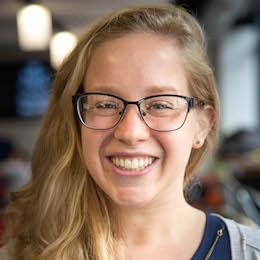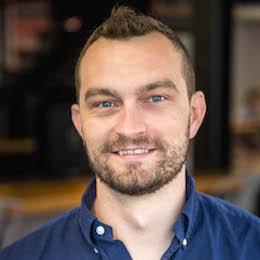2018 Commercialization Fellows
Meet the 2018 Commercialization Fellows and learn about the potential real-world impacts of their technological innovations. Read the Cornell Chronicle announcement for additional information on the cohort.

Hunter Adams
Aerospace, Aeronautical, and Astronautical/Space Engineering, Ph.D. '19
Monarchs - Low-cost, fully-autonomous sensor-and-radio platforms capable of making in-situ measurements of their environment and communicating that information to other monarchs and data-aggregating receiver stations. Applications for agriculture, including monitoring varying crop conditions, helping farmers plant more strategically, and monitoring pest populations.

Taylor Clawson
Aerospace, Aeronautical, and Astronautical/Space Engineering, Ph.D. '19
Neuromorphic processing algorithms for improved use of autonomous micro aerial vehicles. The algorithms can efficiently compute the motion of objects in a vehicle sensor's camera frame and identify any moving targets in real time, requiring minimal computational resources. Applications for surveying industrial equipment, crops, public security, rescue missions, and professional videography.

Nicole Diamantides
Biomedical Engineering, Ph.D. '19
Collagen bioink - Bioink that can be used for cartilage tissue bioprinting. Most existing bioinks use materials that either possess cell-friendly or print-friendly properties that do not inherently possess both. This collagen bioink naturally displays cell-friendly properties along with improved printing properties of the material, possessing high viscosities and faster gelation times than formulations used with traditional tissue engineering techniques.

Kevin O'Brien
Mechanical Engineering, Ph.D. '19
Elastomeric passive transmission- A simple, low-cost device that dynamically modulates the output speed and force of a motor in tendon-driven robotic systems, such as a bionic hand. The transmission is composed of a 3D-printed polyurethane composite, and can be used with low-cost motors to achieve the performance of a high-cost motor at a drastically reduced cost. Prosthetics is the initial application, but there are numerous other applications for robotics.

Sasank Vemulapati
Mechanical Engineering, Ph.D. '19
The High Efficiency Rapid Magnetic Erythrocyte Separator (HERMES) is a novel method to perform low cost blood-plasma separation at the point-of-need. With the help of functionalized magnetic microbeads that capture red blood cells, HERMES separates plasma from blood within two minutes. It does not require the use of a centrifuge or any specialized lab equipment and is particularly suited for advancing the usability of lateral flow diagnostics, which have a high potential for application at the point-of-need.

